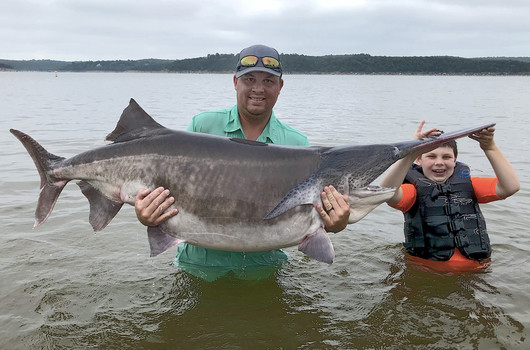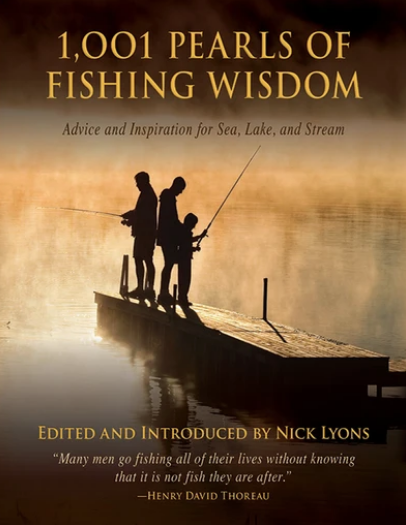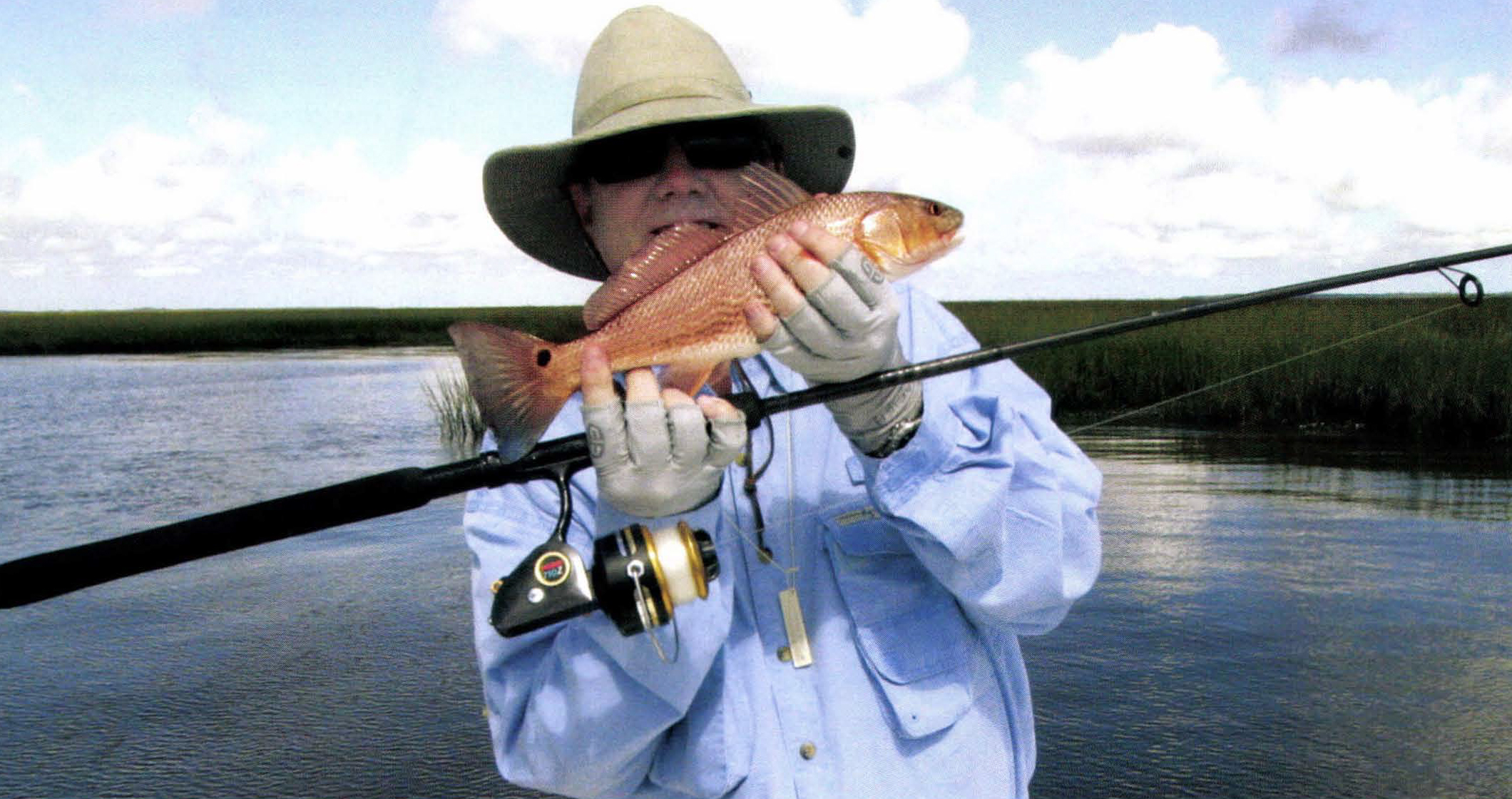A new world-record paddlefish has again been pulled from Keystone Lake near Tulsa, Oklahoma less than a month after the previous world record was snagged in the same lake by a client of the same fishing guide.
Angler Cody James Watters of Ochelata is the newest owner of the rod-and-reel world-record title, after snagging a 151-pound, 14.4-ounce giant Thursday morning. He and his son Stetson, age nine, were fishing as clients of guide Jeremiah Mefford of Reel Good Time Guide Service.
Not only did the fish prove to be the new world record for the species, but it also had a very interesting backstory to tell, said Eric Brennan, Oklahoma Department of Wildlife Conservation Northeast Region Fisheries technician.
Mefford called Fisheries Division staff about 10:20 a.m., saying he believed his client had just broken the current world and state paddlefish record.
Fisheries staff rushed to meet the angler at Keystone Lake. Once there, they began measuring the monster. “It weighed 151.9 pounds, had a total length of 71.5 inches, and eye-to-fork length of 54.75 inches,” Brennan said. (The standard scientific method of measuring a paddlefish’s length is the distance from the eye to the fork of the tail).
Watters wasted no time sharing his accomplishment on social media.
“I’m excited and blessed to catch a fish this big. Bonus having the son there to witness this day. Thank you ODWC!” Watters wrote.
What’s more, the paddlefish had been caught in the past — as part of a research project. The fish had a band on its jaw. Once the fish was officially weighed, Brennan examined the band and “noticed it wasn’t one of our bands. It had an OSU reward tag in it.”
The band, identified as No. 667, was in poor condition and was collected by ODWC, then the fish was released in good shape.
“We only had the fish out of the water for the shortest time possible, about three minutes total. Other than that, we kept the fish moving in the water. It was a perfect release,” Watters wrote.
Brennan confirmed that upon its release, the fish was followed using Live Scope sonar and it appeared to be healthy and swimming well.
Later, a follow-up call to Oklahoma State University turned up information that the paddlefish was indeed part of research efforts by Craig Paukert, then a graduate student and currently a professor at the University of Missouri. Records indicate the fish was caught and banded in the Salt Creek arm of Keystone Lake on Jan. 4, 1997. When banded, this fish was about 2 years old, weighed 7.7 pounds and was about 2 feet long. So this world-record fish is about 25 years old!
Wildlife Department Paddlefish Coordinator Brandon Brown participated in Paukert’s paddlefish banding efforts in the mid-1990s at Keystone Lake. When Paukert heard the news, he contacted Brown. Paukert told Brown, “It’s possible you may have tagged this fish while working with me way back when!”
The news was exciting to Paukert. “This made my day! So, I guess this means that I caught the world-record paddlefish, but I didn’t realize it until 23 years later!”
On ODWC’s Facebook page, Paukert shared some details with Watters. “I was the last person to handle that fish about 14 years before your son was born! This was part of my grad research at OSU. The fish most likely came from a net we set between the Jellystone Launch and the Keystone Marina north of the (State Highway) 51 bridge. It was common to set nets across the river channels.
“What made my day is hearing his son was with him today. Great story all the way around in a time when we need great stories. Wish I could have been there so we could have a pic with the last two people to touch that fish — 23 years apart!”
Watters’ paddlefish will become the officially recognized rod-and-reel world record for the species when it is entered in scientific journals by ODWC biologists.
The largest American paddlefish on record, taken by a spear-fisherman in Iowa in 1916, reportedly weighed 198 pounds.
The paddlefish is a primitive species, with a fossil record dating to the age of the dinosaurs about 75 million years ago. Resembling a shark, it has smooth skin and a skeleton mostly of cartilage.
A long paddle-like blade, called a rostrum, extends forward from the fish’s head. The rostrum is covered with tens of thousands of sensory receptors that enable the fish to detect weak electrical fields produced by zooplankton, its primary food.
The American paddlefish roams lakes and rivers of the Mississippi and Missouri basins. Paddlefish were once very abundant across their range but have declined in many areas. These fish can live up to 30 years, and they can grow to huge sizes.
Oklahoma’s paddlefish population is seen as among the healthiest in the nation, and the sport of snagging paddlefish draws anglers from many states. The Wildlife Department’s paddlefish management program involves an extensive process of netting, weighing, measuring and marking paddlefish with metal bands on the lower jaw. For several months every year, the Department operates a Paddlefish Research Center near Miami, Okla.
Anglers wanting to experience battling these large fish are required to have a state fishing license (unless exempt) and a free paddlefish permit. Regulations for paddlefish snagging can be found in the Oklahoma Fishing Regulations Guide.





